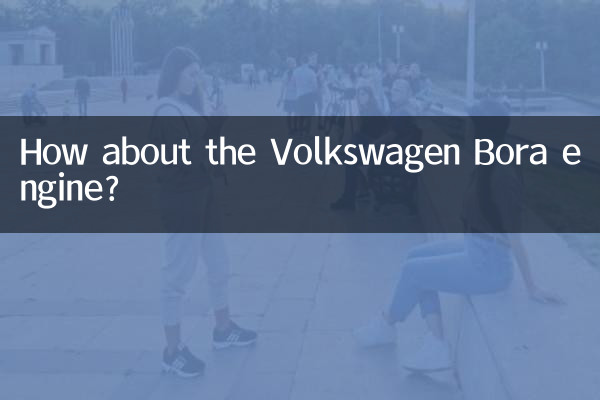How about the Volkswagen Bora engine? Comprehensive analysis of power performance and user reputation
In the past 10 days, hot topics in the automotive field have focused on new energy vehicle policies, fuel vehicle price reductions and promotions, and reviews of classic models. Among them, the Volkswagen Bora is a representative of German family cars, and its engine performance has become the focus of consumers' attention. This article will provide you with an in-depth analysis of the real performance of the Volkswagen Bora engine from three dimensions: technical parameters, actual performance and user feedback.
1. Comparison of engine technical parameters (1.5L vs 1.4T)

| model | Displacement | Maximum power | Peak torque | fuel grade | Comprehensive fuel consumption |
|---|---|---|---|---|---|
| EA211 1.5L | 1498ml | 113 HP | 145N·m | No. 92 | 5.7L/100km |
| EA211 1.4T | 1395ml | 150 HP | 250N·m | No. 95 | 5.5L/100km |
2. Actual performance of power system
1.1.5L naturally aspirated engine: Adopting MPI multi-point electronic injection technology, focusing on economical ride comfort. The actual measured acceleration from 0-100km/h is about 12 seconds, which is suitable for urban commuting scenarios. The latest batch has optimized low-torque performance and can output 90% of torque at 1800rpm.
2.1.4T turbocharged engine: Equipped with in-cylinder direct injection technology, the power reserve is more abundant. When matched with a 7-speed DSG gearbox, it can accelerate from 0-100km/h in just 8.3 seconds. The turbo is fully involved at 1750rpm, and the acceleration advantage is obvious in the middle.
3. User real word-of-mouth statistics (from Autohome/Bitauto)
| Evaluation dimension | 1.5L user satisfaction | 1.4T user satisfaction |
|---|---|---|
| dynamic response | 76% | 89% |
| fuel economy | 92% | 85% |
| Noise control | 83% | 78% |
| Maintenance cost | 95% | 82% |
4. Analysis of technical highlights
1.ACT closed cylinder technology: The 1.5L version can shut down two cylinders under medium load, with a measured fuel saving effect of 0.4L/100km.
2.Dual circulation system: By switching between Miller cycle and Otto cycle, high thermal efficiency (37.5%) and power output are taken into consideration.
3.Lightweight design: The weight of the all-aluminum engine is reduced by 22kg, and new designs such as an electronic water pump improve the vehicle's controllability.
5. Purchase suggestions
1.The first choice for urban transportation: The maintenance cycle of the 1.5L version is as long as 10,000 kilometers, and the minor maintenance cost is about 400 yuan. It is suitable for users with an annual driving mileage of less than 20,000 kilometers.
2.Recommended for high speed and long distance: The 1.4T version accelerates 3.5 seconds faster from 80-120km/h and overtakes more easily, but please note that fuel additives need to be added every 5,000 kilometers.
3.Used car value retention rate: According to Guazi second-hand car data, the 3-year value retention rate of the 1.4T version is 8% higher than that of the 1.5L version, but the price difference at the time of purchase is about 12,000 yuan.
6. Latest market trends
In the third quarter of 2023, Volkswagen launched an extended engine warranty policy for Bora: the 1.4T model can be upgraded to a 5-year/160,000-kilometer warranty for a fee. Dealers in some areas provide free basic maintenance for life, significantly reducing vehicle costs.
Taken together, the Volkswagen Bora engine maintains the consistent advantages of German cars in terms of reliability and fuel economy, and the power performance of the 1.4T version is comparable to some 2.0L self-priming models. However, users need to choose based on actual car usage scenarios. For users who pursue ultimate peace of mind, the 1.5L version is still a safer choice.

check the details

check the details